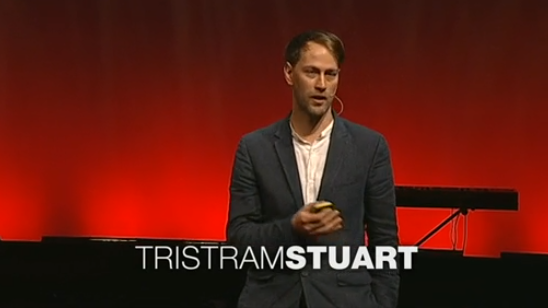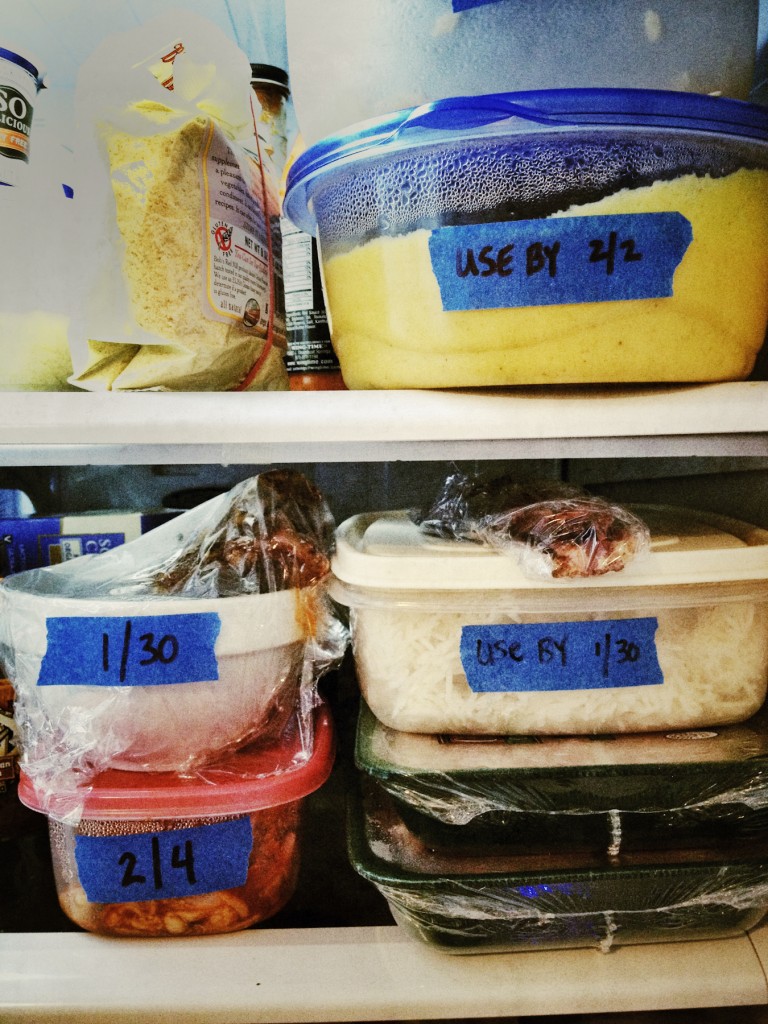Liberian mom making the one meal a day her family eats. Photo courtesy Anthony Greco
When my husband and I married 23 years ago, we invited our guests to provide food for the reception in lieu of a wedding gift. As is often the case with church potlucks, we had enough left over to feed at least 30 individuals. On our way to our honeymoon, we packed everything into the car and drove it to the local shelter. Not wasting food has been on my screen for a long time.
When I came across an article in Eating Well titled, “Waste Not, Want Not,” with the subtitle, “The average American tosses 20 pounds of food per month. Here’s how not to,” I was fascinated. Author and activist Tristram Stuart has made it his life mission to “tackle the global food waste scandal.” According to his research, developed countries waste obscene amounts of food. One third of the crops grown never make it to market because of cosmetic reasons. In a single factory, 13,000 slices of fresh bread crusts were discarded daily based on the assumption that no one wants to eat bread crusts. You can watch his TED Talk here to learn more.
“According to a report last August by the National Resources Defense Council, the average American tosses about 25 percent of food and beverages purchased,” writes JP for US News and World Report. If that figure is correct, we throw away approximately $2700 annually. That’s two college classes. Or the oil payment for a month. (Kidding.) Or, enough food to feed 10 Liberian families for the entire year. The average gross national income for Liberians is $480 US. They spend 53% of that on food. Kind of puts food waste into perspective, doesn’t it?
Stuart is using his platform not to heap shame on us for failing but to encourage all of us to consider how we might stop “hemorrhaging our food.”
A few simple suggestions.
1. Don’t cook more food until you have eaten what’s already been cooked. This has been a super helpful practice for me. Leftovers are not sexy, particularly with this foodie generation. Trying serving them for lunch or simply freezing them into individual packages which would work for a meal at the office.
2. To prevent food spoilage, label leftovers with painter’s tape and a sharpie. Put the labels where you can clearly see them when you open the refrigerator door. Though I have a good handle on what’s lurking behind the condiments, no one else seems to. I date the food from one week of when it was placed in the refrigerator (except for fish, which needs to be eaten within three days).
3. Set aside time each week to write up a detailed menu and make your grocery list while you can see what provisions you need. I cannot tell you have many times I do a partial grocery list and meander aimlessly through the store, trying to remember if I have the chopped tomatoes which I need for tomorrow’s dinner. Inevitably, I grab two more cans and upon my arrival home, discover that I had seven cans of chopped tomatoes but no coconut milk which the recipe also calls for.
4. Don’t toss out that jar of peanut butter simply because the expiration date passed two months ago. According to an article in The Wall Street Journal, “Over 90% of Americans may be prematurely tossing food because they misinterpret expiration dates,” according to the study by Harvard Law School’s Food Law and Policy Clinic and the Natural Resources Defense Council. “Phrases like ‘sell by,’ “use by,” and ‘best before’ are poorly regulated and often misinterpreted.” Non-perishable food is generally non-perishable. Those crackers which fell back behind the bag of dog food apparently more than a year ago might taste stale, but they will not make you sick. This is obviously not true for perishable food such as meats, dairy, produce, or food in cans which have been dented or damaged. Read this article for more information. (I am not advocating eating something out of a can which “expired” last century mind you.)
5. Go through your pantry every six months and rotate older food to the front. This will generally prevent #4 from being an ongoing problem.
6. When you do have food waste, compost. Composting coupled with recycling eliminates approximately 25% of your garbage haul. For those of us who have to pay per full garbage bag, this is good news. That savings will pay for your compost bins and you will have the added benefit of enriching your soil. Composting is super easy. We throw in anything except bones, avocado pits, and oil which has been used for frying, toss in cut grass and some loam, soak it with water, cover, and magic happens. (Yes, it can get a bit odoriferous in the summer–mostly because I don’t “stir” it enough–and no, we’ve never had problems with animals.) Many cities such as San Francisco already have a curbside composting program and other communities or states offer discounts for bins.
7. Consider donating some of the money you save from eating more efficiently to a local food bank or international organization which helps those in need to feed themselves, such as Heifer Project or Fields of Hope.
8. Did you know that people still glean? This centuries old practice of gathering produce after a farmer or private landowner has taken what they want has been gaining momentum in the past few years. One friend gleans from area grocery stores and gathers sufficient produce, baked goods, and other perishables to cover her half of her family’s food needs. Men and women across North America regularly volunteer to harvest unwanted crops for the poor in their area.
Tristram Stuart ends his TED Talk with, “We do have the power to stop this tragic waste of resources if we regard it as socially unacceptable to waste food on such a colossal scale.” While I may never be as organized and on top of this as I’d like, I’m all in. How do you prevent food from going to waste in your apartment or home?
Please consider subscribing to my blog if you like what you see. Simply enter your email into the box under Subscribe. You can also follow me on Twitter (@DorothyGreco) or on my pro FB page.



This a great reminder! I work on this myself and although we do compost, I try to avoid wasting food I’ve made. It has been an adjustment when just cooking for one. One person seems to eat way less than half of what two people eat!
Thanks for your sentiments, so cogently written and easily digestible. Blessings!
Thanks so much for reading Rachel. How are you BTW??